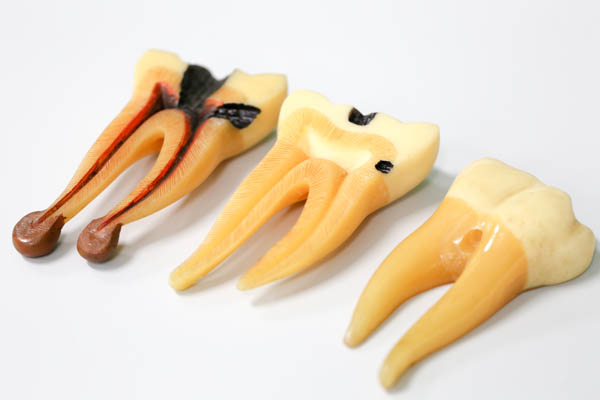Dental bridges can be a great solution for anyone who is missing teeth. There is often confusion about what types of dental bridges are available and how each one functions.
When looking for a prospective dental bridge, understanding the different options and which one may be most appropriate for a given situation is essential. There are four common types of dental bridges to choose from. These are traditional dental bridges, cantilever bridges, Maryland bridges and implant-supported bridges.
Types of dental bridges
1. Traditional dental bridges
The most common and widely used type of dental bridge is known as the traditional dental bridge. It comes with a prosthetic tooth that serves as the replacement for the missing tooth. These false teeth are held in place via supportive dental crowns known as abutments. Abutment fixtures typically utilize the two natural teeth sitting alongside the gap in the patient’s smile.
In order to crown those teeth, a portion of enamel is removed to make space for the prosthetic. Traditional bridges are often made from ceramic or porcelain fused to metal. In most cases, these types of bridges can only be used when there are natural teeth present on both sides of teeth being replaced.
2. Cantilever dental bridges
These work a lot like traditional dental bridges. However, cantilever bridges are supported by a single abutment rather than two. Cantilever bridges are prepared similarly to traditional bridges by first removing the enamel of the tooth next to it in order to apply the crown abutment. This variety of bridge is not as commonly used because it has been known to put pressure on the supportive tooth, which can cause it to crack. For this reason, it is not recommended for teeth that are near the back of the mouth.
3. Maryland bridges
Unlike traditional or cantilever bridges, Maryland bridges rely on a metal or porcelain frame that is applied directly to the back of neighboring teeth using a bonding solution rather than the removal of enamel. For this reason, Maryland bridges are often viewed as a more limited approach than either traditional or cantilever bridges. However, the challenge with Maryland bridges is that this bonding resin can potentially fail to hold the bridge in place when exposed to the extreme pressure associated with grinding down food. Due to the way it is applied, it is also possible for this type of bridge to interfere with the gum line or the bite of the tooth.
4. Implant-supported bridges
If more than one tooth is missing, then implant-supported bridges may be the best solution. These bridges tend to feel just like natural teeth since they are held in place by dental implants rather than crowns or frameworks. The implants are inserted into the position where the missing teeth were previously, and it is this series of implants that supports the bridge. This is accomplished through two surgeries that place the implants first and put the bridge in afterward. In its entirety, this process can take five months until completion. When completed, maintaining the bridge is identical to caring for your natural teeth.
There are many prosthetic replacements for missing teeth. If these solutions sound like an attractive option for you, contact one of our dentists.



